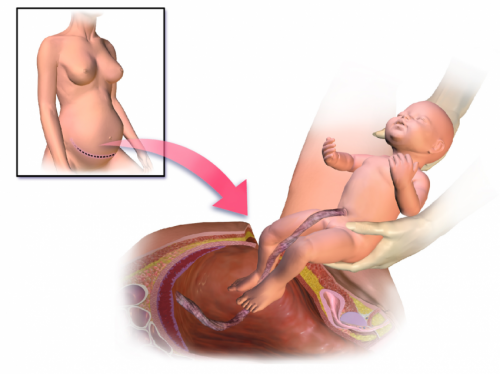Military medical treatment facilities could improve access for emergency cesarean sections

In the United States, maternal mortality rates remain higher than in comparable countries and racial disparities persist. While many countries have experienced improvements in maternal mortality rates, U.S. rates increased to an estimated 16.9 pregnancy-associated deaths per 100,000 live births between 2006 and 2016 and currently has a higher maternal mortality ratio than more than 50 other countries. Longer travel times to access obstetric care are associated with worse outcomes for mothers and babies, and only about 61.6 percent of the U.S. population has timely emergency access (within 30 minutes) to obstetric care. A new study led by investigators at Brigham and Women's Hospital evaluates a potential solution that could improve access: partnering with military medical treatment facilities (MTF), which could provide high-quality obstetric care, including emergency cesarean delivery. The researchers identified 17 facilities with capacity to offer care in underserved areas, particularly in rural communities.
"Offering emergency cesarean sections in underserved regions has the potential to not only improve care for pregnant patients in need of emergency access, but it also has the potential to address inequities and support military readiness," said senior author Molly Jarman, Ph.D., MPH, of the Brigham's Center for Surgery and Public Health (CSPH). "We have health care resources that need more patients, and we have patients in need of health care. While the maps of need and capacity do not overlap perfectly, when they do, we have an opportunity to open the door."
"This could be a win-win for military MTFs and civilians," said corresponding author Tarsicio Uribe-Leitz, MD, MPH, also of CSPH. "There is a lot to gain for both sides by reducing disparities, improving maternal care, and providing training and experience for military health care professionals."
Uribe-Leitz, Jarman and colleagues studied access to obstetric care across the U.S. They looked at areas that were within a 30-minute travel time of a medical facility capable of providing emergency c-section care. The team identified 3 MTFs that were the only facility within a 30-minute drive and 14 additional MTFs that could improve access to care.
"Improved access to emergency obstetric care could save lives," said Jarman. "We see this work as bringing together a solution for two separate issues—reducing preventable maternal mortality in the rural U.S., and the ongoing policy discussions on 'right sizing' the U.S. military health system."
More information: Uribe-Leitz T et al. "Geospatial Analysis of Access to Emergency Cesarean Delivery for Military and Civilian Populations in the US" JAMA Network Open DOI: 10.1001/jamanetworkopen.2021.42835


















